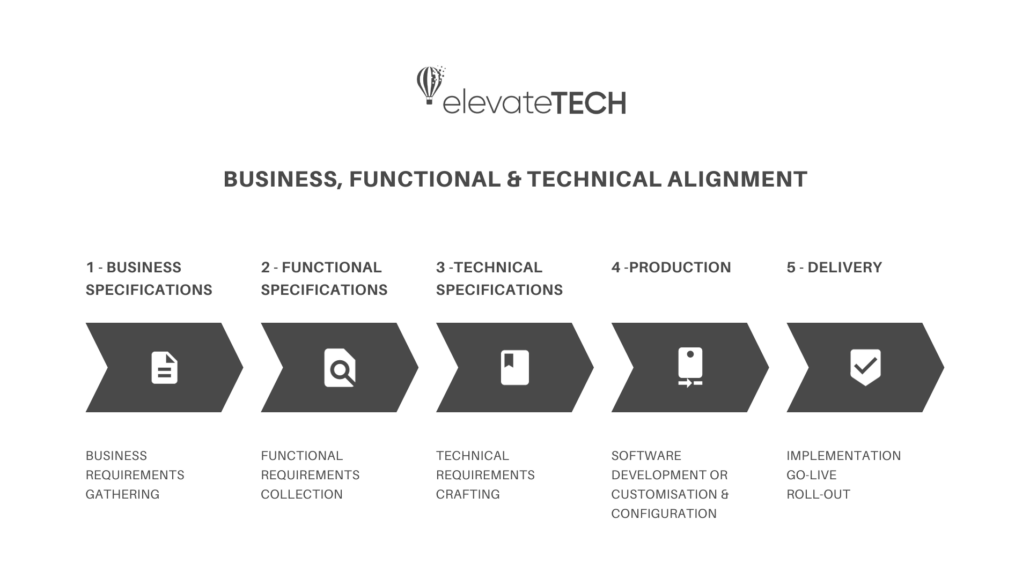Successfully introducing new software solutions in organisations is the end result of careful planning, coordination and seamless alignment with business objectives. To achieve the latter it is key to have business, functional and technical dimensions in perfect synchronisation.
Business Alignment is the starting point
Before choosing a software package or SaaS or kick-starting the development of proprietary software it is crucial to perfectly understand the business objectives and the goals behind the software project. When there is no clear understanding of the desired outcomes the project can easily go off-track.
Business alignment is key as it defines the project success (with clearly defined and set criteria). Once business goals have been set, one can effectively allocate resources. At this point, a risk assessment is carried out, to identify potential risks (together with their probability and impacts). Risk management and mitigation starts here.
Functional Alignment bridges business targets and technical implementation
The next step, after completing the business objective and requirements definition, is to extract and formulate the functional aspects of the project. The business requirements are translated into functionalities that the software solution is intended to deliver. These functional requirements will come in hand when testing the software, to ensure the original scope was met and delivered. The functional alignment ensures that the project remains on the path to meeting business objectives.
Functional alignment is key as it provides an in-detail roadmap for the project with features and functionality clearly defined in for example, user stories. All features and functionality is categorised and prioritised as must-haves and nice-to-have. When drafting functional specifications and requirements, always take a user-centric approach. Keep the end-users and stakeholders in mind. This will enhance user satisfaction and ensure great usability. Once again, having well-defined functional specifications prevents projects from going at a tangent.
Technical Alignment: The Building Blocks of the Software
In a nutshell, the business and functional alignment set the direction, whereas technical alignment deals with the nuts and bolts of software development or the customisation of off-the-shelf software products to fit the organisation’s project requirements. This phase goes into the technology stack to be used, the architecture, and code base (if no no-code platforms are used) – All this fully aligned with the previously completed functional requirements.
One might ask ‘Why is Technical Alignment Crucial?’ The answer is three-fold, namely, to have efficient development and deployment, to have a scalable and maintainable solution and to reduce risk, such as business continuity disruptions.
“While these three alignments—business, functional, and technical—may seem distinct, they are inherently interconnected.” – Clayton J Zammit, ElevateTECH
Changes in one of the three aspects will have a direct impact on the others, therefore maintaining their synchrony is of paramount importance. Having all three aligned will lead to efficacy and efficiency. Communication needs to flow flawlessly throughout the project lifecycle and a special attention needs to be given not to derail from the business requirements when drafting the functional and technical requirements.
The success of technology projects relies on the delicate balance between business, functional, and technical alignments. These three aspects should work in harmony to deliver software solutions that not only meet business needs but are also efficient, user-friendly, and sustainable.


